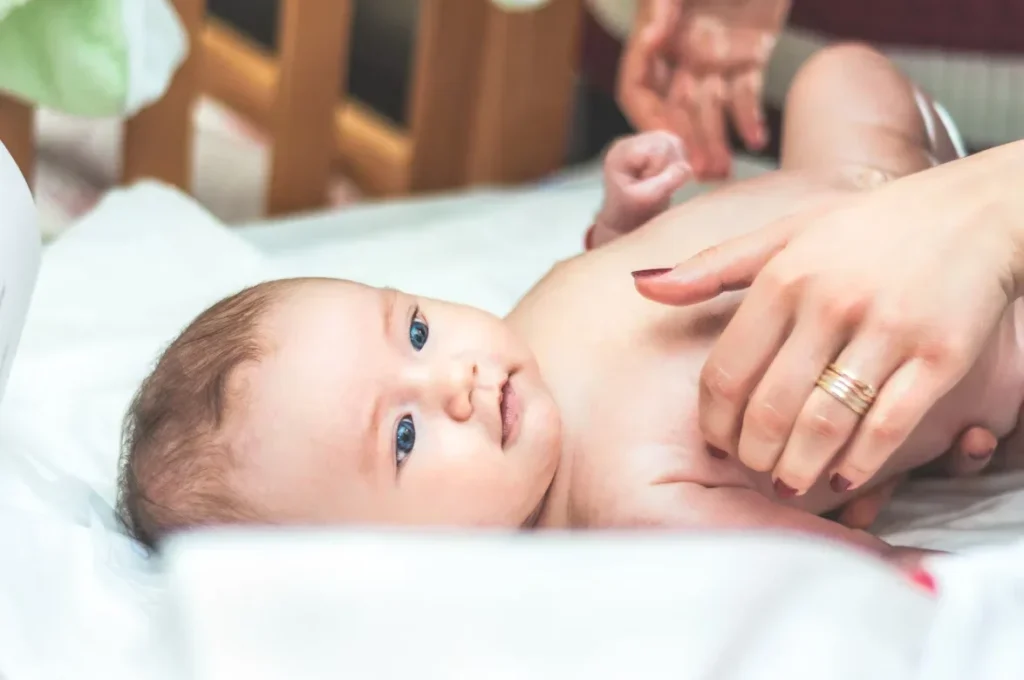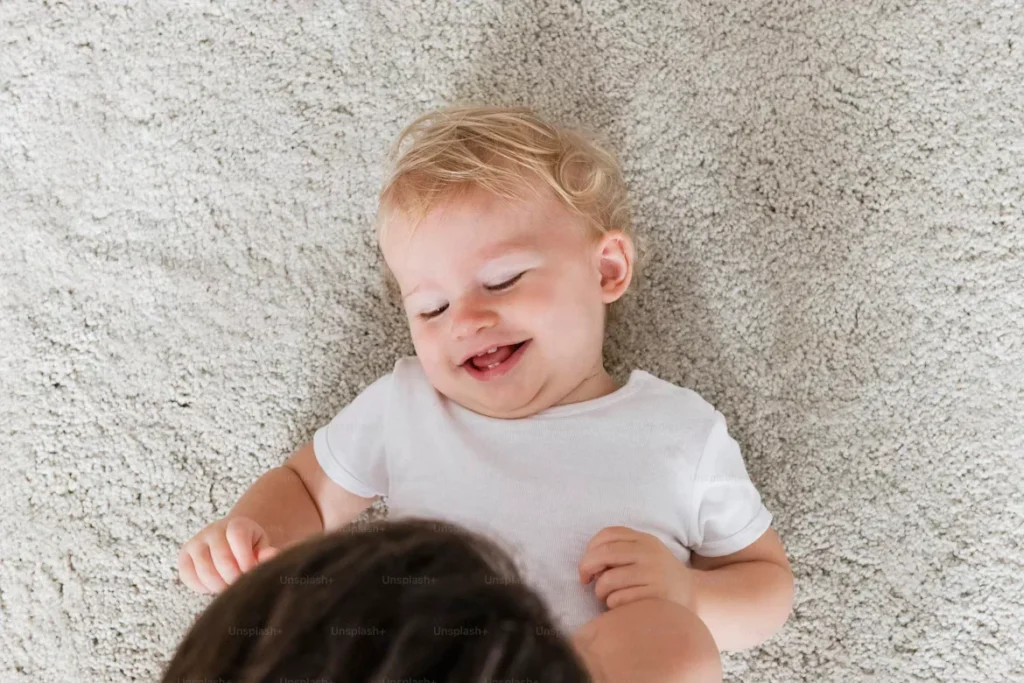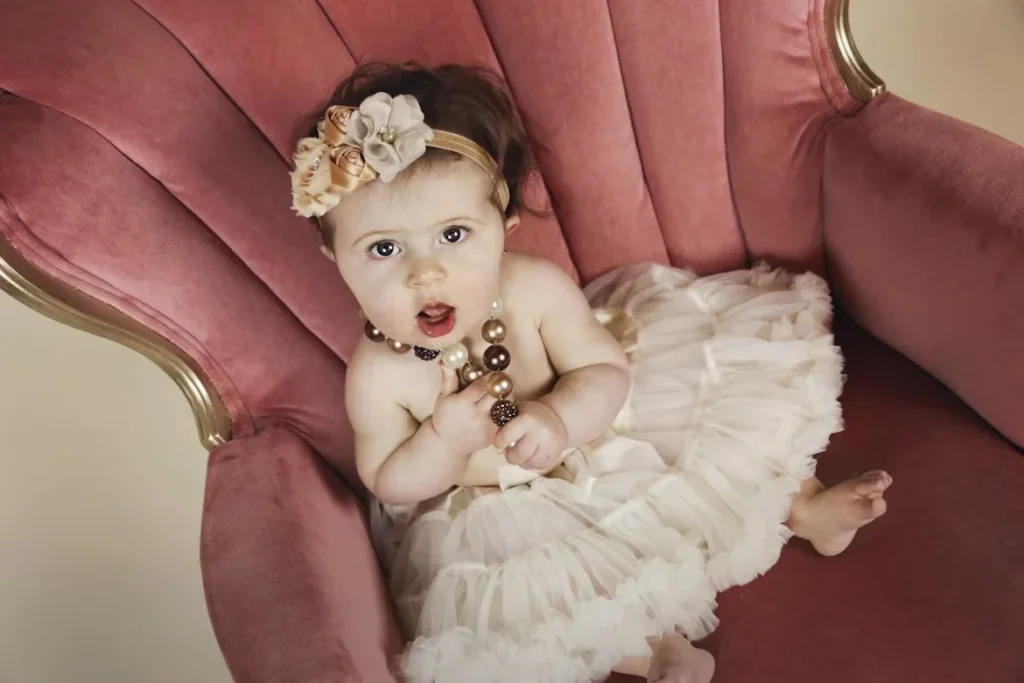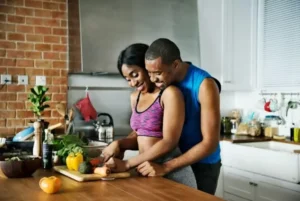Disclaimer: This article is for informational purposes only and should not be taken as medical advice. Every baby develops at their own pace. If you have concerns about your child’s growth or development, please consult a pediatrician or qualified healthcare professional.
From First Smiles to First Steps: All the Best Development Milestones in Your Newborn’s Life
From the moment they are born, newborns begin an extraordinary journey of physical, cognitive, and emotional development that lays the foundation for the rest of their lives. While every baby develops at their own pace, there are several key milestones that most infants typically reach within specific age ranges.
Keeping track of these milestones isn’t just a fun baby step, but is very important in tracking and maintaining your child’s healthy development.
0-2 Months, The Fourth Trimester

In the first two months of a baby’s life, they are adjusting to the world outside the womb. This period is often referred to as the fourth trimester because newborns still crave the warmth, comfort, and rhythm of the womb.
Key developmental moments include:
- Reflexes: Newborns are born with several reflexes, like the rooting reflex (turning toward a touch on the cheek) and the grasp reflex (clenching fingers around an object).
- Sensory Awareness: Babies begin to recognize familiar voices, especially those of their parents, and may startle at loud sounds they aren’t accustomed to.
- Visual Focus: They can see objects 8-12 inches away and may begin to track slow-moving objects with their eyes. A good way to test this is with your hands or baby toys.
- Social Connection: Around the 6- to 8-week mark, many babies begin to smile in response to faces or voices, a sign of positive early social engagement.
During this extraordinary stage, skin-to-skin contact, gentle rocking, and soothing voices help babies feel secure and allow them to form attachments.
2 – 4 Months: Early Communication and Control

Between two and four months, babies become alert and interactive. They begin to show more control over their bodies and start experimenting with making sounds.
Some milestones to keep watch for include:
- Cooing and Gurgling: These early vocalizations are the building blocks of language and a good indicator of their expressive ability.
- Improves Head Control: With regular tummy time, babies begin to lift and hold their heads more steadily.
- Smiling and Socializing: Babies smile more frequently and may respond to your voice with excitement.
- Hand Discovery: they start to notice their hand and may bring it to their mouths or bat at toys.
This is a great time to introduce simple toys, mirrors, and high-contrast books to stimulate your baby’s senses.
4 – 6 Months: movement and Curiosity

By four to six months, babies are eager to explore their surroundings. Their motor skills and curiosity are developing at a rapid rate.
Look for these signs of progress:
- Rolling over: Babies typically roll from their tummy to their back, then back to their tummy.
- Reaching and grasping: They can hold and bring toys to their mouths.
- Laughing and squealing: these joyful sounds reflect the growing emotional and social awareness of children.
- Recognizing familiar people: Babies may show excitement when they see familiar faces
At this stage, babies thrive on interaction and social engagement. Singing, reading, and playing peekaboo can help strengthen bonds and support further cognitive development.
6-9 Months: Sitting, scooting, and social skills

Between six and nine months, babies become more mobile and socially aware. They begin to understand cause and effect and may show preferences for certain toys or people.
Some key milestones are:
- Sitting without support: this allows babies to use their hands more freely to explore and look around their new world.
- Crawling or scooting: not all babies crawl in the traditional sense; some roll, scoot, or creep to get around.
- Babbling: repetitive sounds like “ba-ba” or “da-da” are early attempts at speech, and are a great sign.
- Stranger anxiety: Babies may become cautious around unfamiliar people, which is a regular part of emotional development.
This is also the time to baby-proof your home, as curiosity and mobility go hand in hand.
9-12 Months: Standing, Pointing, and the Glorious First Words

The final stretch of the first year is filled with exciting changes, and babies are becoming more independent and expressive, making you feel even more connected to your new child.
Some notable developmental highlights:
- Pulling to Stand: Many babies begin pulling themselves up on furniture and may cruise along with it before they’re able to try and start standing with no support.
- First Words: Simple words like “Mama” or “Dada” may emerge, often with great enthusiasm.
- Pointing and Waving: These gestures are essential steps in communication, and they’re gaining autonomy in how they express themselves and their wants.
- Pincer Grasp: The ability to pick up small objects between thumb and forefinger, which in turn allows them to gain more independence if self-feeding.
By 12 months, many babies can understand simple instructions and may respond to their name or familiar routines.
When to Seek Support
While it’s essential to remember that every baby develops at their own pace, it’s also helpful to know when to seek guidance. If your baby isn’t meeting several milestones or seems to be losing skills they once had, it’s a good idea to talk to your pediatrician or a qualified nurse.
Some of the significant signs to watch for are: if your baby has no social smiling by 3 months, poor head control by 4 months, no babbling or vocal sounds by 6 months, not sitting by 9 months, and no gestures like pointing or waving by the time they turn 1 year old. Staying vigilant can make a significant difference, as early intervention plays a big part in recovery if something were to go wrong. Nurses with specialised training, like those with an aic nursing degree, are equipped to assess developmental concerns and connect families with the right resources.
Ultimately, tracking your child’s growth is much more than a checklist. Each milestone, whether it’s a first smile or a first step, is a reminder of how much your baby is learning every day.











